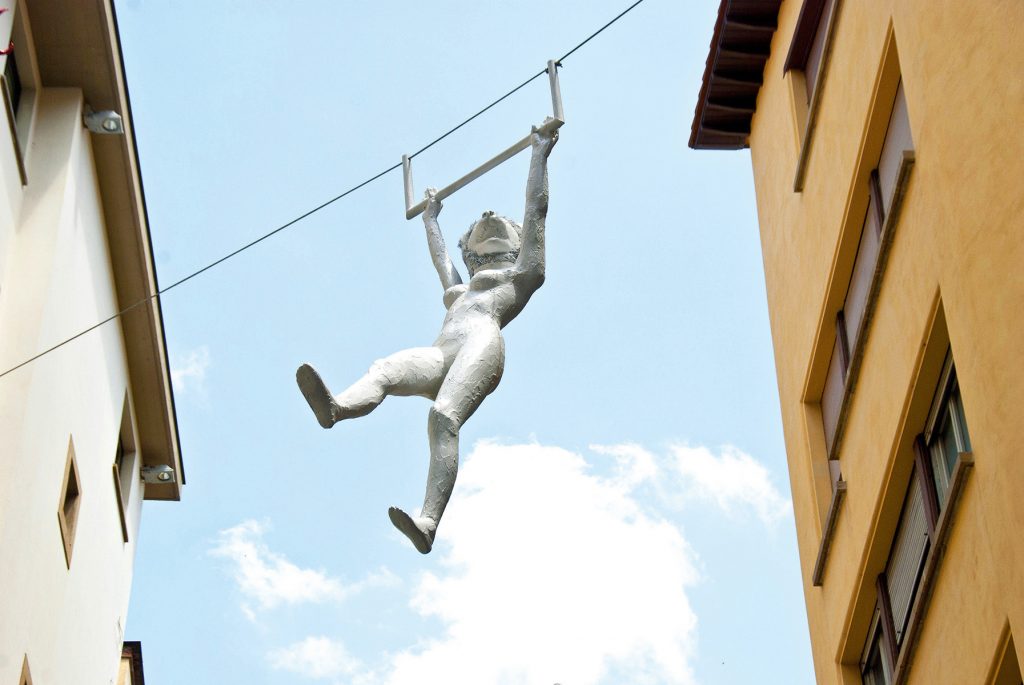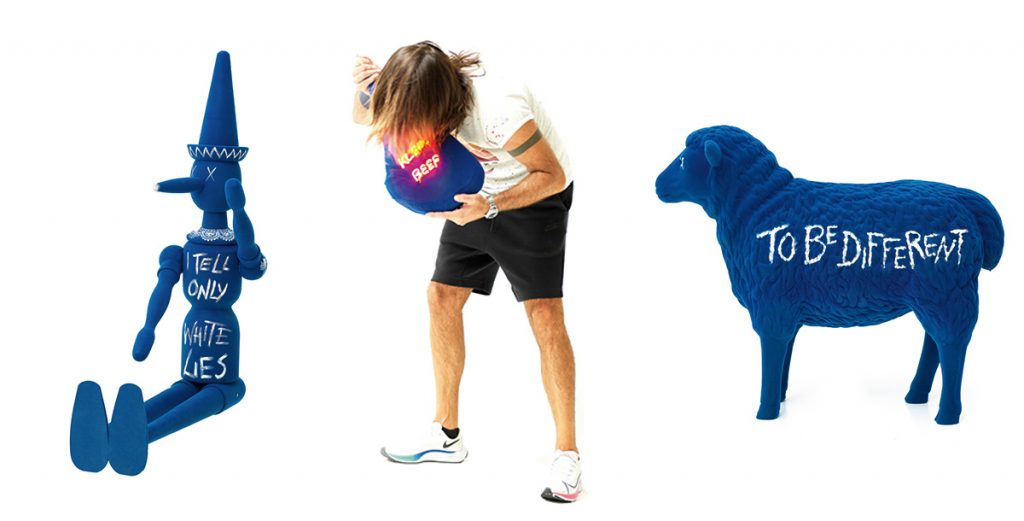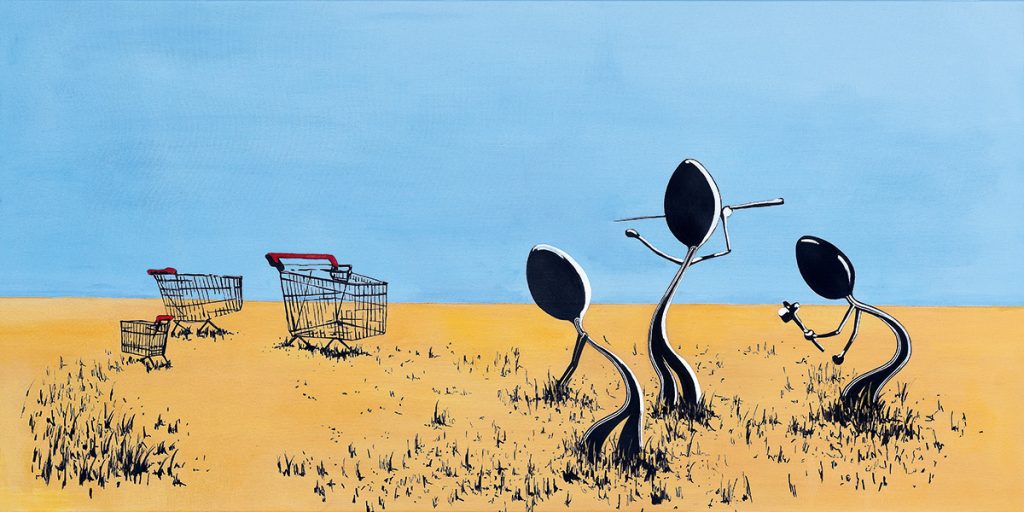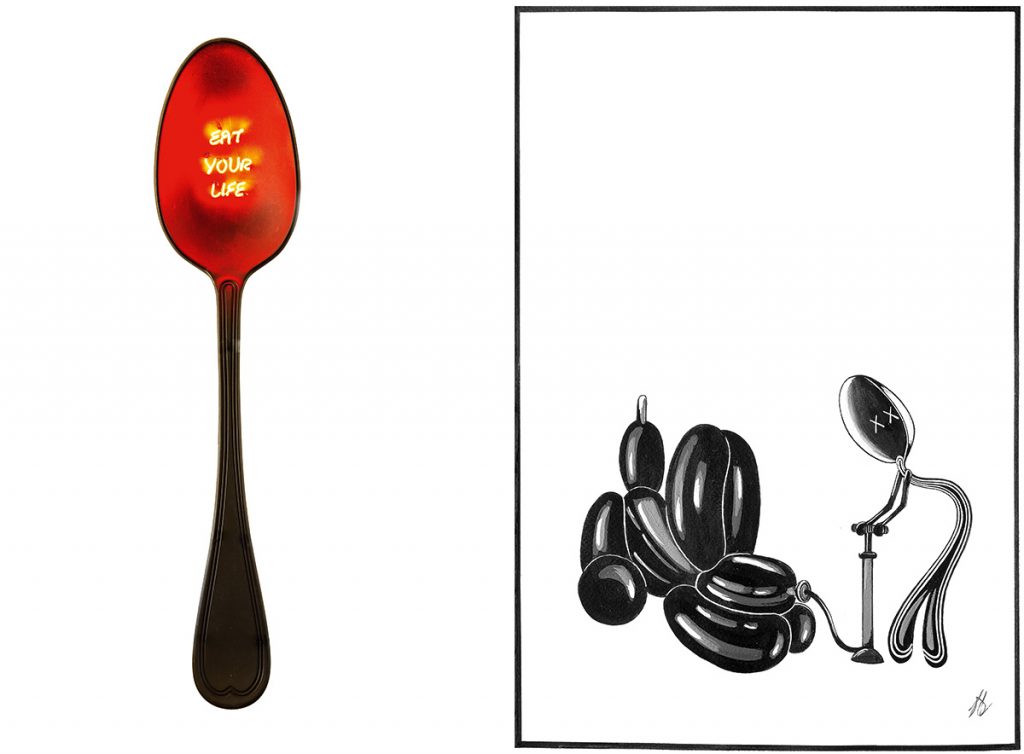An explosion of energy, exuberant style and the serene look of someone who gobbles up everyday life with the same intensity, who certainly does not mince his words. Simone D’Auria is an artist who’s sure of his message and knows how to move on the market without compromise, without having to be “liked by everyone”.
Let’s start with Simone D’Auria’s alter ego: a spoon. Or rather, “Mr Spoon”.
Where did it come from? What does it mean?
To answer these questions, the Bergamo-born artist responds with his motto: “Eat your life today, not tomorrow!”.
This is how an object with an apparently simple use represents the perfect synthesis of D’auria thought, which at least in the initial part of our chat tended to develop around culinary concepts, like when I ask him about the blue flock ham (in homage to Yves Klein, along with other works, from the “White Lies” Pinocchio to “Sheep to be different”) he answers once again with a sort of motto: “culture is the only real nutriment in today’s world “. Simple. Unopposable.

Mr Spoon has travelled through time in city spaces, from the first recycled plastic sculptures exhibited in Florence, to the paintings in which it features as a homage to great artists who’ve lived their lives with everyday passion (remember? you have to eat your life today…) like Edvard Munch, or those who observe life from the comfort of anonymity, like Banksy.
But Mr Spoon, as we said, hasn’t got a problem when it comes to speaking its mind, like when we find it intent on inflating a Jeff Koons dog, in a not-even-slightly veiled critique of the values of the art market and the effective value of certain artists.

Another significant aspect of D’Auria’s body of work is that much of it is outdoors, in the urban environment, fine examples of which came from the artist’s collaboration with Ferragamo on the “Personal/Impersonal” installations, again in Florence. “I was strolling around the city, the Uffizi and in and out of various churches and the cathedral. I kept on seeing animal faces represented on human bodies. I asked myself why, and found an explanation in the history of the city itself: during the renaissance the people of Florence used to associate the character of an animal with members of the influential personages and families of the time. So I did this installation where these figures first move skyward and then fall back to earth and into real life, symbolising how each of us has the spirit of an animal within us, that influences the way we are and the life we lead”.
If on one hand every artist has the need for absolute freedom of expression, on the other it is equally true that they’re always in search, even on an unconscious level, of a distinctive trait that renders them unique and recognisable, like the crystalline hardness of Fontana or, on the contrary, the excessive rotundity of Botero.

So we could say the distinctive trait of Simone D’Auria lies not in the graphic and style of the sculpture – despite its evident personality – as much in the psychology of that conditioned response of immediate, joyful sympathy his works arouse at first sight, opening up seconds after to reflection in search of a message, a veiled reality revealed by a simple phrase, a simple gesture.
But always fun, because art is joy, period!

